Chlorine and Sulphur Dioxide Gas Removal (2019)
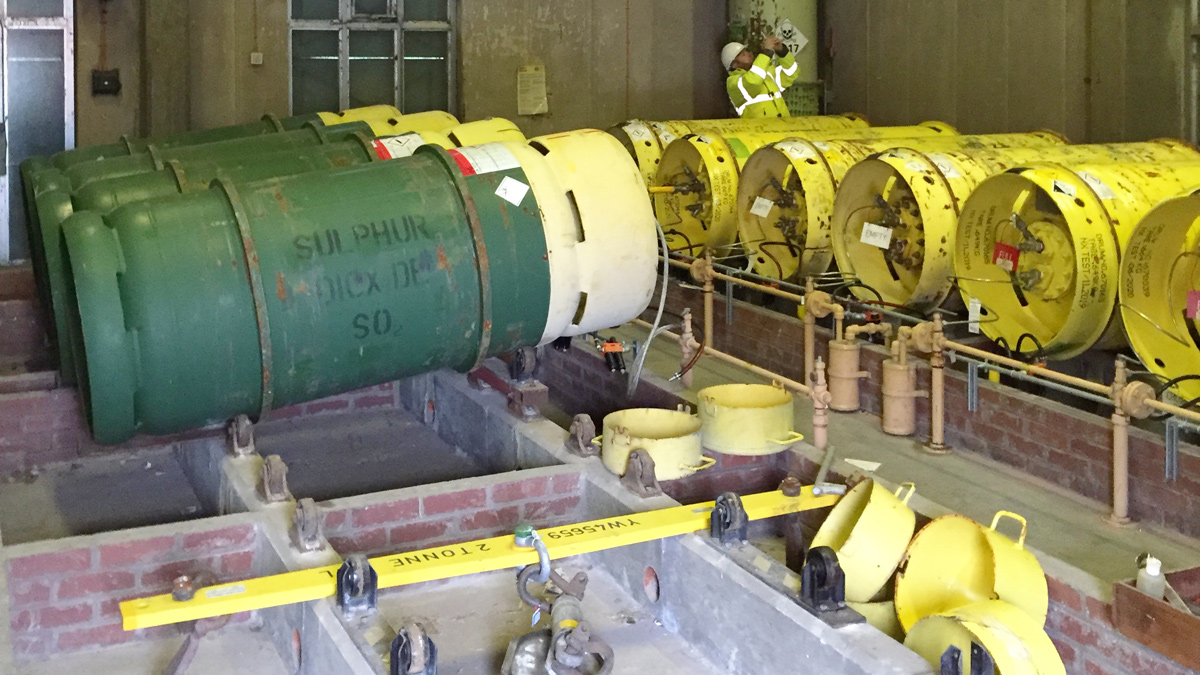
Chlorine gas drums at Loftsome prior to removal - Courtesy of Yorkshire Water
In 2016 Yorkshire Water made the strategic decision to remove all chlorine and sulphur dioxide gas from its Water Treatment Works. This formed part of the Yorkshire Water Safety Improvement Plan as the existing toxic gas disinfection systems were becoming non-compliant with Health and Safety regulations and posed a potential significant risk to employees and customers from an uncontrolled gas escape. It specifically supported the Yorkshire Water ‘Keeping you safe and Healthy’ performance commitment by replacing hazardous non-compliant gas systems with new sodium hypochlorite and sodium bisulphite chemical dosing systems. The programme was made of 10 projects that ensured the programmes objective was met across 10 different water treatment works.
Project background and driver
While chlorine remains the universal choice for UK water companies, the form the chlorine takes varies. Chlorine gas was once the mainstay but it poses health and safety risks, leading to an increased use of sodium hypochlorite, which contains chlorine in liquid form, as well as on-site electro-chlorination.
Many treatment works are situated near residential areas, and the repercussions of a major unplanned chlorine gas release could be significant: used as a chemical weapon in the First World War and in Syria in recent years, it can have a fatal impact on the respiratory system. While deaths are unlikely in the case of a gas leak from a treatment works, particularly when safeguards are put in place to shut down the system if there is a release, it remains a serious threat to health, and those working on-site are at greatest risk.
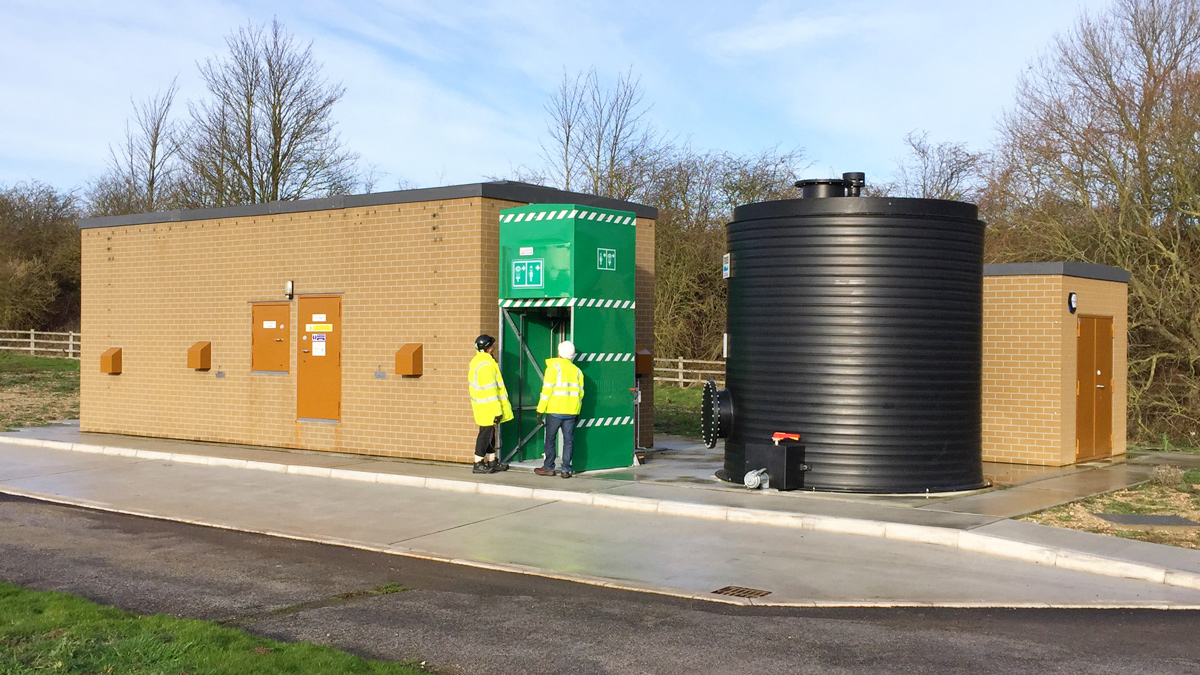
Standard product kiosk (brick effect) installed at Etton Wold WTW – Courtesy of Yorkshire Water
The larger sites must also contend with the dangers and expense of safely transporting and storing chlorine gas drums of up to 1,000kg, with the COMAH (Control of Major Accident Hazards) regulations understandably onerous. As a liquid, sodium hypochlorite does not pose the same issues. Over recent years, several companies have started to move away from chlorine gas, particularly at their largest sites, however Yorkshire Water is in the process of becoming the first UK water and sewerage company to eliminate chlorine gas and sulphur dioxide from its water treatment processes entirely.
Delivery
Yorkshire Water set out to deliver the ambitious programme across 10 sites with one of their AMP6 Framework Partners, AECOM and Galliford Try (AGT). AGT were engaged to deliver the work using the NEC3 Contract.
To progress this work into a delivery contract at the earliest opportunity, the ‘scope risk balance’ approach was used. This substantially reduced the time and cost of the investigation phase by identifying all known risks, their likelihood and probably impact before attributing them to the appropriate party.
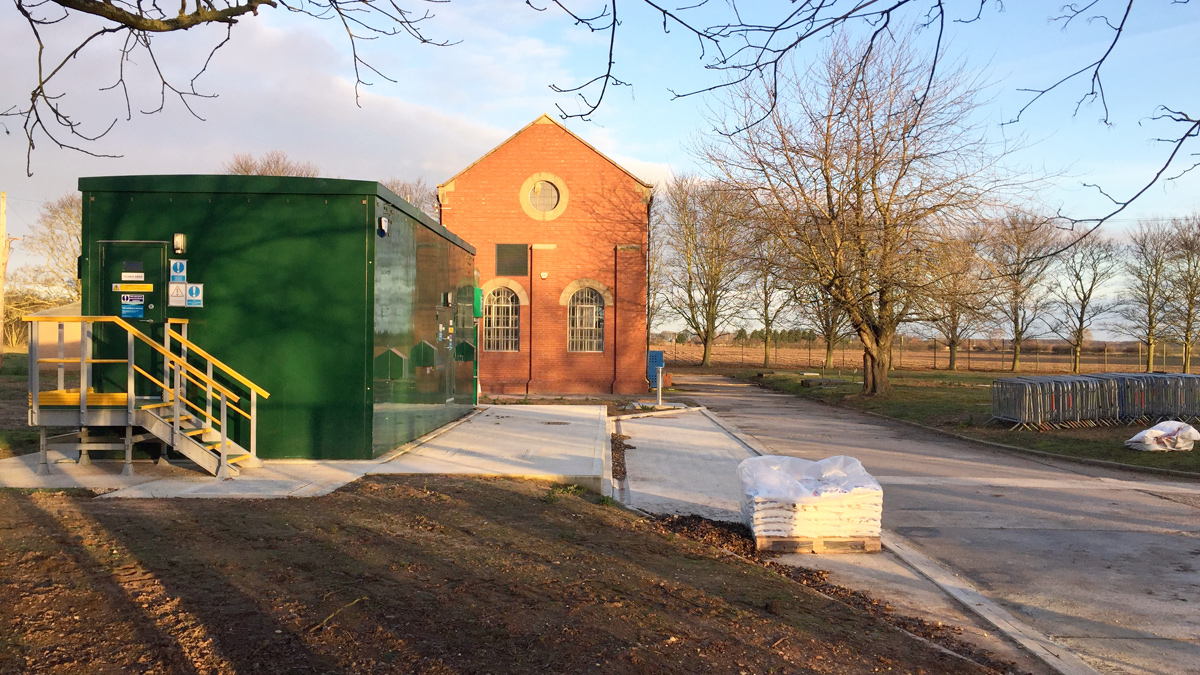
Hypo kiosk installed at Highfield Lane WTW – Courtesy of Yorkshire Water
This approach led to a significant time and cost saving on the investigation. All risks that were believed to be still live at contract signing have continued to be managed through the Risk Register.
The scope of works for each site included replacement of chlorine gas disinfection system with a 15% bulk hypochlorite system and at three sites an equivalent replacement of sulphur dioxide gas dosing systems with bulk sodium bisulphite systems. Including:
- Chemical storage and delivery areas (including temperature controlled storage rooms).
- Chemical dilution where necessary.
- Chemical dosing, measurement and control.
- Appropriate H&S for chemical installation.
- Decommissioning and removal of toxic gas pipework and equipment.
- Modifications to the existing failsafe shutdown system to incorporate new signals.
At four of the sites, modular kiosks featuring everything required for treatment are being used to directly replace the existing systems. For the rest, AGT is reutilising existing apparatus or buildings that were on site to install new dosing equipment, which requires the use of temporary dosing systems while the upgrades take place.
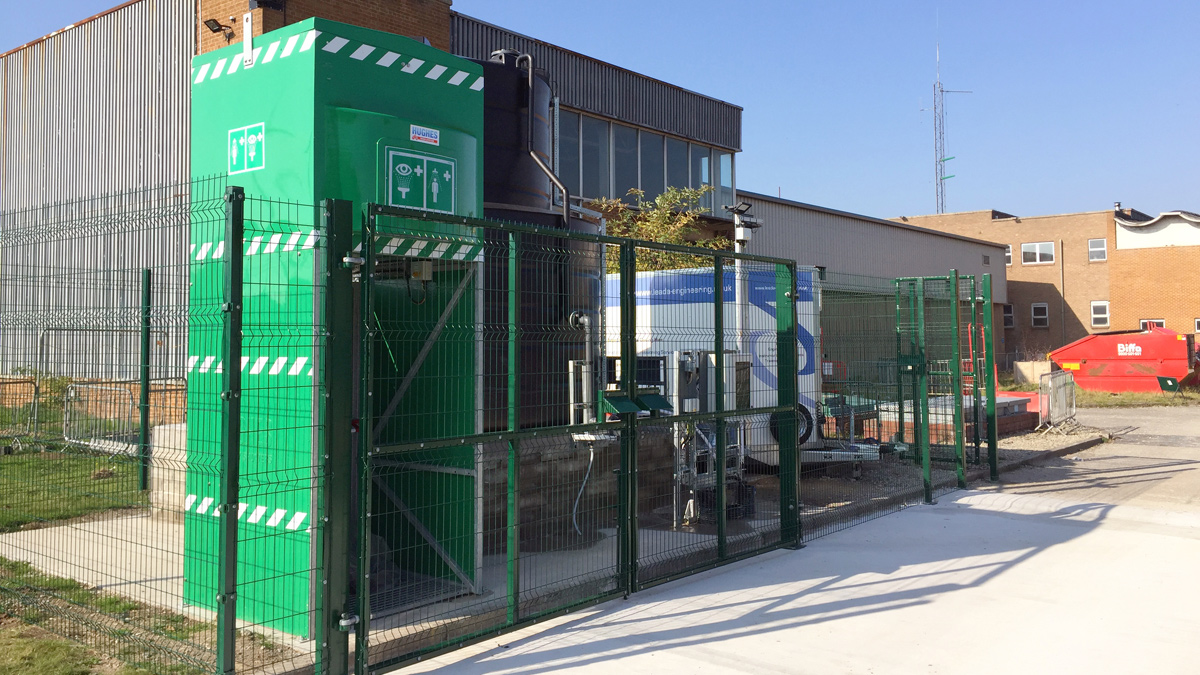
Example of the temporary hypo dosing units at Loftsome – Courtesy of Yorkshire Water
Collaborative programme team
In order to ensure the successful execution of the programme, the programme manager set up a Collaborative Programme Team (CST). This was made up of the programme manager, business sponsor, solution engineer, end user and contract partner people.
The team met every two weeks to ensure that the programme’s health and safety, expenditure, schedule (including 8 week deep dives), risks, commercial/contract and any immediate blockers to progress were managed.
Some of the significant risks and challenges that the team had to deal with were:
- Access to operational sites to carry out the work – including the planning and managing of operational site shutdowns with no customer impact.
- Ensuring that a form of disinfection is always operational; this is to ensure compliance with Water Quality Regulations.
- The safe decommission and removal of the redundant gas systems.
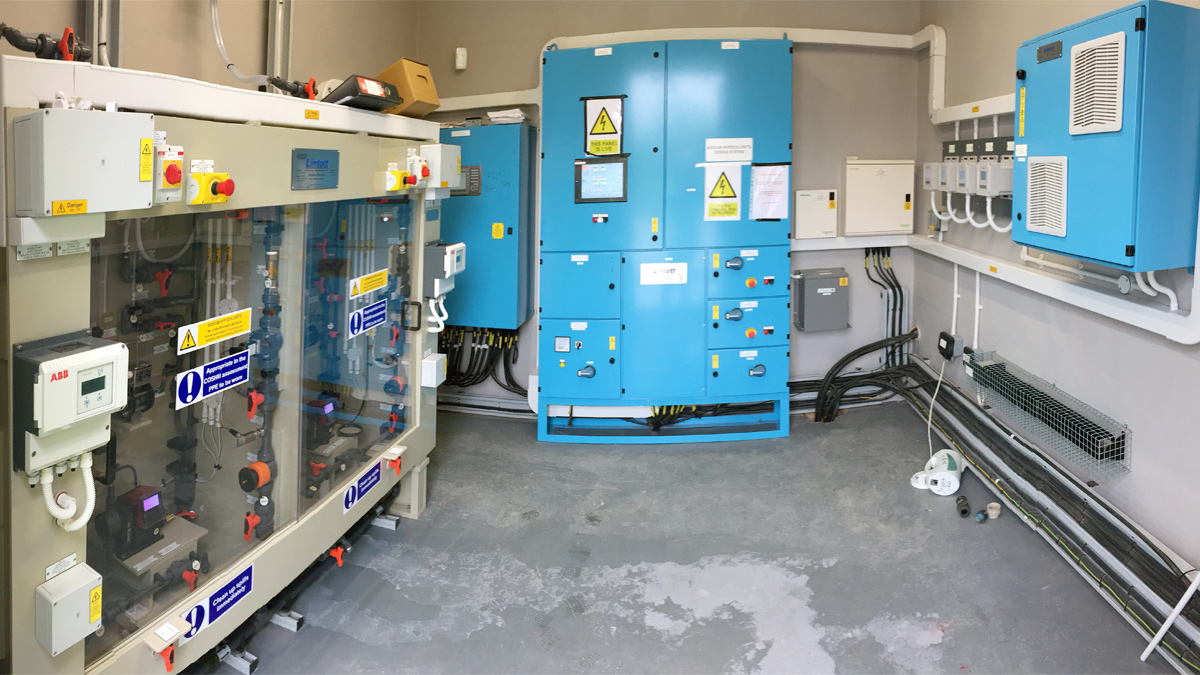
Dosing room at East Ness – Courtesy of Yorkshire Water
Progress to date, anticipated completion
Yorkshire Water has made significant progress to date and are now no longer dosing chlorine and sulphur dioxide gas on its water treatment works. There is still work ongoing on two water treatment works to complete decommissioning of the old gas systems and physically remove the gas from site. This is planned to be completed by July 2019.
There is also work still required on the new permanent dosing systems to ensure they are fully functional and failsafe before being handed over to operations. This is planned to be complete by September 2019, at which point any temporary dosing systems can then be removed.




